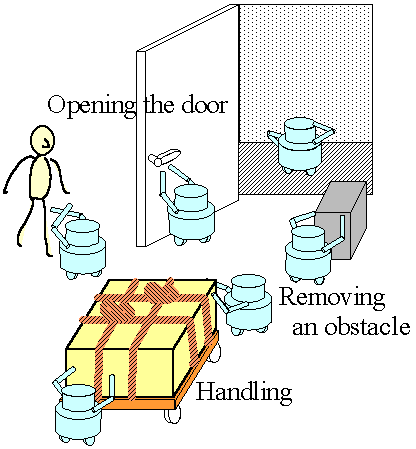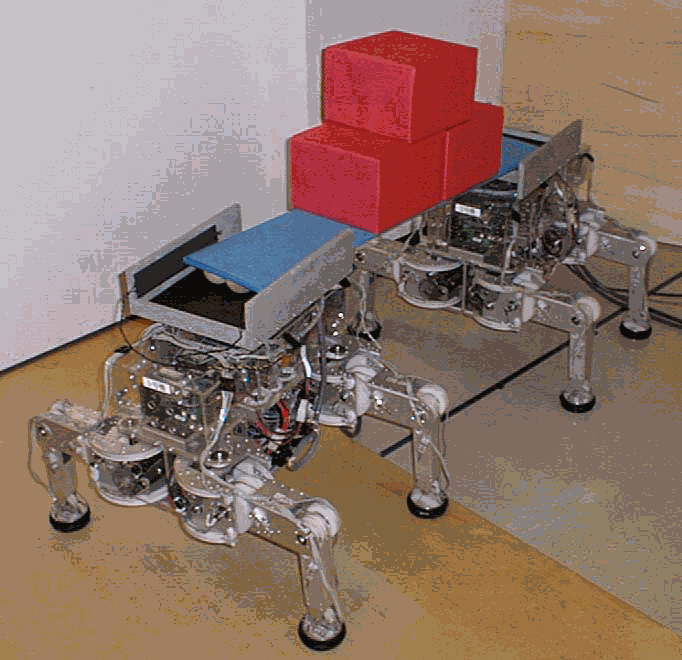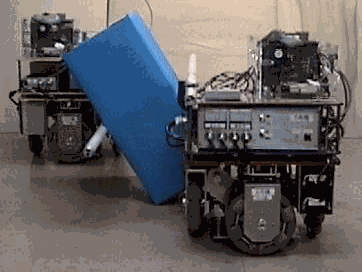
We have been studying multiple mobile robot system since 1989. This system can realize high quality tasks by cooperation of robots. However, it is difficult to construct a multi-robot architecture that can deal with general tasks. We consider that a practical multiple mobile robot system can be established by combining rough, robust off-line plan-making for robots, and on-line navigation of robots using sensor information. We call this “dwarf intelligence.”
Recently, we are interested in the cooperative tasks that accompany the dynamic change of the system during doing a task and that restrict force interaction between robots, for example, box-picking up, transportation, and so on. We are studying on the following three themes;
This study deals with task assignment among multiple mobile robots when many sub-tasks have to be realized. We construct a flexible transporting system to change the roles of the robots adapting to the circumstances.
◆ Cooperative transportation by multiple quadruped robots ( Fig. 2 )
This study constitute the cooperative system of legged robots to expand its working area to 3-dimensional environment, such as on the steps or slopes. We propose the strategy of motion planning taking account of legged robot’s properties such as vibration of its body during walking.
◆ Planning for cooperative manipulation by multiple mobile robots with tools ( Fig. 3 )
This study proposes that mobile robots use tools to accomplish a task, e.g. tumbling an object, more flexibly and more easily. We integrate a global motion planning to generate the transport path and a manipulation planning to manipulate an object with tools.


